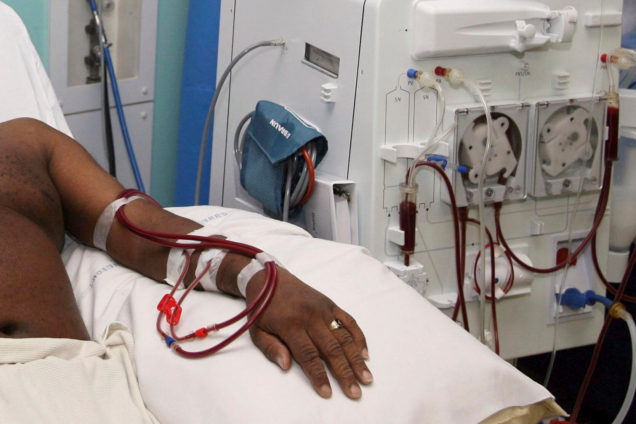In the heart of Ghana, where vibrant culture meets the undeniable pulse of life, a silent crisis has been unfolding. Behind the colourful fabrics, the rhythmic beats of the drums, and the smiles of its people lies a stark reality—a kidney crisis that has gripped the nation.
It all started with a ground-breaking study, "Fifty years of haemodialysis in Ghana - current status, utilization and cost of dialysis services," authored by Elliot Koranteng Tannor and his dedicated team. The findings in this yet to be published study sheds light on the dire situation Ghana faces regarding kidney care.
The Numbers! The research laid bare the cold, hard facts. Ghana has 51 dialysis centres, but only 40 of them are operational. A staggering 65% of these life-saving facilities are concentrated in the bustling Greater Accra region, leaving other regions in the shadows.
The Imbalance! The geographical imbalance is palpable. While Greater Accra basks in the glow of healthcare access, the Ashanti region boasts just 17.5% of the functioning centres. Seven other regions, encompassing nearly 18.5% of the population, have just one centre each.
The Machines That Matter Ghana has a total of 299 dialysis machines, with a median of 6 machines per centre. However, this equates to a meagre 9.7 machines per million people. The patient-to-machine ratio is equally concerning, with approximately four patients vying for each machine.
The Struggle for Survival Dialysis prevalence stands at 38.8 patients per million population. The numbers differ dramatically between public and private centres, with the former accommodating more patients. Quality of care is at stake, with 57.5% of centres lacking a resident nephrologist. Ghana's nephrologist density is a mere 0.44 per million population, painting a bleak picture for patients in need.
The Unreachable Dream In this tale of woe, accessibility is a recurring theme. Seven regions, home to nearly one-fifth of the population, are barren deserts when it comes to dialysis centres. The harsh truth is that 92% of kidney failure patients have no access to dialysis, casting a dark shadow over their chances of survival.
The Cost of Life The financial toll of this crisis is severe. The mean dialysis cost per session is $53.9, and patients are forced to choose between public and private centres where costs vary. Public centres offer a glimmer of hope with a lower cost of $48.2 per session, while private facilities charge $56.7.
The Absent Lifeline Perhaps the cruelest blow is the absence of government support. The National Health Insurance Scheme, designed to provide a safety net, doesn't cover dialysis costs. This leaves most patients to fend for themselves, forced to bear the heavy burden of paying for their life-sustaining treatments out of pocket.
The Race against Time As the sun sets over Ghana's beautiful landscape, the kidney crisis remains a dark and looming shadow. The study by Dr. Elliot Koranteng Tannor and his team has exposed the harsh realities faced by the nation's kidney failure patients. It's a race against time to bridge the gap in accessibility, improve quality of care, and alleviate the financial burden for those who need it most. Ghana's kidney crisis is no longer silent. It's a rallying cry for change, a plea for help, and a testament to the resilience of a people who refuse to let their nation be defined by this crisis.
Latest Stories
-
Will Ghana’s democracy stand the test of time in the 2024 elections?
2 hours -
Hindsight: Dreams fairytale run proved one thing; it is possible
4 hours -
God makes rulers, not you; you can’t choose your successor – Mahama to Akufo-Addo
4 hours -
Contributors own SSNIT, they must decide who becomes its Director-General – Austin Gamey
5 hours -
Move away from theory-based learning towards practical learning approaches – AUCC President to students
5 hours -
Haaland scores as Manchester City beat Nottingham Forest
7 hours -
Villas-Boas elected Porto president
7 hours -
Situation on frontline has worsened, Ukraine army chief says
7 hours -
US doctor describes witnessing starvation in northern Gaza
7 hours -
CAFCC: RS Berkane make final after USM Alger refused to play 2nd leg over Moroccans’ jersey
7 hours -
Elon Musk in China to discuss enabling full self driving
7 hours -
PSG clinch Ligue 1 title after Lyon’s win over Monaco
9 hours -
Guinness Ghana sets the pace at Ghana Beverage Awards with six awards
10 hours -
Burkina Faso suspends BBC, VOA radio broadcasts over killings coverage
10 hours -
Nicole Kidman honoured with AFI Life Achievement Award
10 hours

